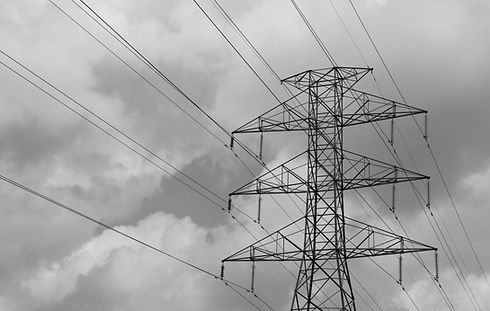
GOTO MARKET STRATEGY

WE ARE LIVING IN THE AGE OF CLIMATE CHANGE
Climate Change is here and utilities need to reduce the carbon footprint of their customers.
This is mandated and supervised by the Government of Canada through a combination of industry incentives and carbon tax penalties to ensure that all emissions targets are met.
There are many broad ranging programs that have been implemented to achieve these goals. Some more effective than others.
Historically, thermostats have long been considered a good method at reducing emissions by reducing energy waste.
Unfortunately for the past couple of decades, research has shown that savings from thermostat programs have plateaued because they are heavily reliant on changing occupant behaviour.
But OVO changes all that. We found new areas to save significant amounts of energy and we don't require the occupant to change their behaviour at all.
"
Climate change is the single greatest threat to a sustainable future but, at the same time … presents a golden opportunity to promote prosperity, security and a brighter future for all.
Ban Ki-Moon, Former Secretary-General of UN
"

Our mission is to fight climate change in the most effective manner possible. How
?
To maximize our environmental impact, it makes sense to get our thermostat to the MOST people FAST.
Selling to individual customers, while a typical and proven strategy, is slow and incurs huge advertising budgets and marketing campaigns, costly customer-service and tech-support infrastructures, and complex inventory and delivery logistics.
We’ve opted for a much more rapid “ramp-up to market” route: moving OVO through the distribution channels of utilities.
"
The utility distribution channel means concentrating our marketing contacts to leverage a broad, swift market penetration under a streamlined sales budget.
"
Our new tech gears us with unique capability to harvest new areas of energy conservation (in double digits) without the need to change occupant behavior – a flawed premise, central to competitor touts of savings.
Minimizing the human factor, we reap results exceeding what rivals can only assume or project.
This gives us a huge advantage over the competition. Not only do we easily achieve similar savings through setback schedules, but in addition, and unique only to us, we save in other areas effectively doubling the energy saved, relative to any smart thermostat.

WE ARE ABLE TO DO THIS, WHERE OTHER THERMOSTATS HAVE FAILED, BECAUSE OVO IS A HUGE LEAP FORWARD IN THERMOSTAT TECHNOLOGY
IN SIMPLE TERMS ...
We offer utilities a simple, turn-key energy management opportunity that their grid customers will find remarkably easy to use – no behaviour change required for unwavering comfort with bankable monthly savings
COMPETITIVE
ADVANTAGE
THE LIST GOES ON AND
ON ...
OVO's superior energy savings will incentivize utilities to prioritize our thermostat over all others.
Here’s why:
-
Genuine, energy savings averaging 15% (based on region) across the grid – even for users unable or unwilling to engage programmable setbacks.
-
IMPORTANT NOTE: These savings are ABOVE & BEYOND any savings attained using the standard setback schedule method (which we also provide). So, if we are to believe the energy savings potential of today's thermostat, we effectively double the savings to 30%, when looking at a per unit basis. However our impact is much larger on a community basis because we affect all occupants, unlike today's thermostat who's savings apply to only part of the population. This effectively makes any community-wide savings attained by OVO almost 4X more than today's smart thermostat and in some cases even more than that.
-
Simultaneous reduction in energy consumption (kWh) and capacity requirements (kW) critical to Demand Side Management (DSM) programs aimed at mitigating peak load issues that amplify costs, guzzle profits, and escalate capital outlays.
-
Lower energy consumption (kWh) that rewards utilities millions of dollars as added incentive for meeting emissions targets set for them and their customers by government agencies.
-
Greater base load capex flexibility that buys time in capacity planning.
-
In assessing emissions reduction strategies, our cost effectiveness ratios (PAC, TRC)** perform 3x better than rival marketing “claims.”
-
Less reliance on expensive open-market kWh purchases or firing up the wasteful “peaker” units.
-
Ability to offer higher rebates to customers seeking improved thermal comfort with a lower monthly bill that elevates customer loyalty in a competitive, deregulated marketplace.
-
As a swift product rollout sweeps the utility footprint access to Big-Data usage patterns will prove extremely helpful in predicting residential loads.
-
Better position with Public Utility Commission rate-setters and Environmental Agencies.
** PAC and TRC+ are ratios used by utilities and governments to help them decide which programs are most effective at reducing emissions. Essentially a quick and normalized guide to measure the cost-to-impact of a program to help decide where to best spend their budget for maximum impact.
AN IDEAL PATH
In short, our ideal customer is the public utility who can offer our attractive, next-gen intelligent thermostat equipped to tailor consistent, carefree thermal comfort to a large grid of users seeking a lower energy bill.